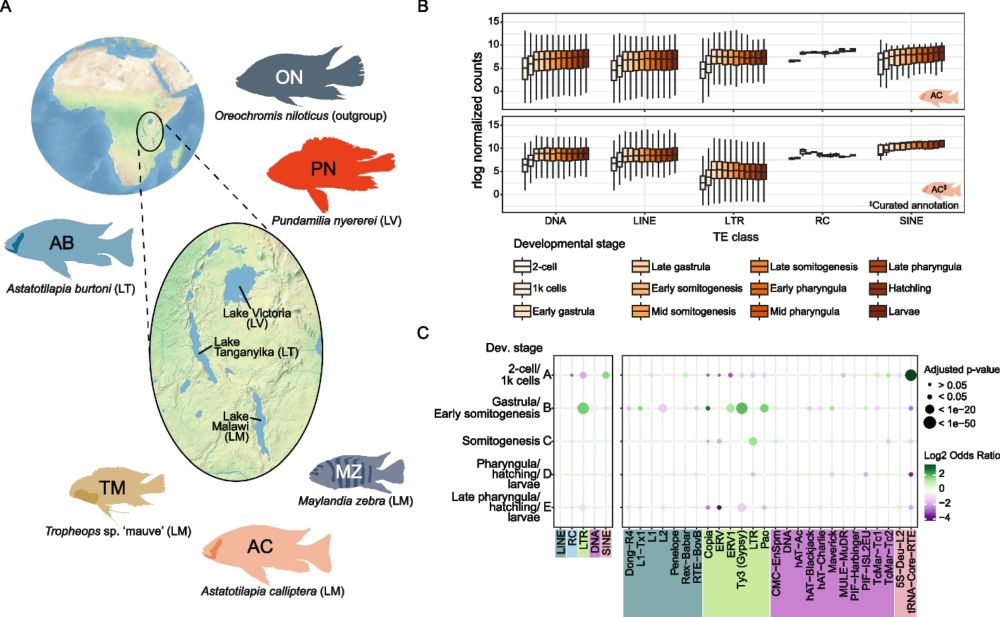I’ve spent quite a bit of time in recent months thinking about Keith McIvor AKA JD Twitch, who passed sway on Friday. There is much more to come, but here’s a first, raw tribute. Rest in power Keith - we’ll miss you x
www.juno.co.uk/junodaily/20...
22.09.2025 11:00 — 👍 20 🔁 6 💬 3 📌 0
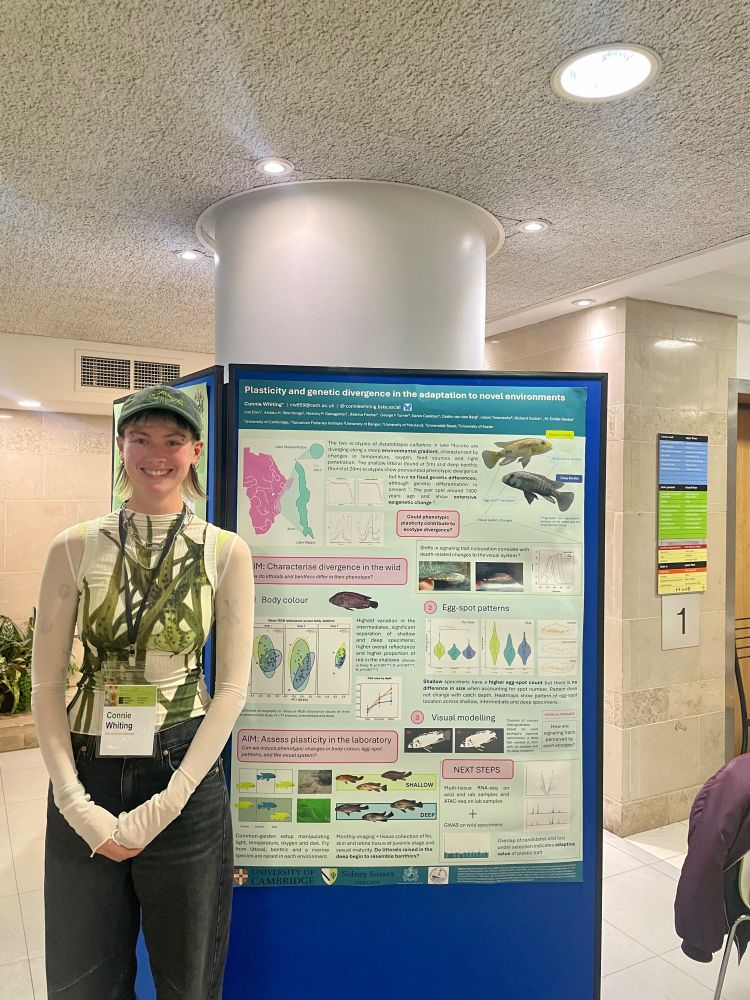
Yapped about my fish and won first prize! Had a wonderful time at #egg2025 last week @britishecologicalsociety.org
23.09.2025 09:36 — 👍 6 🔁 1 💬 0 📌 1
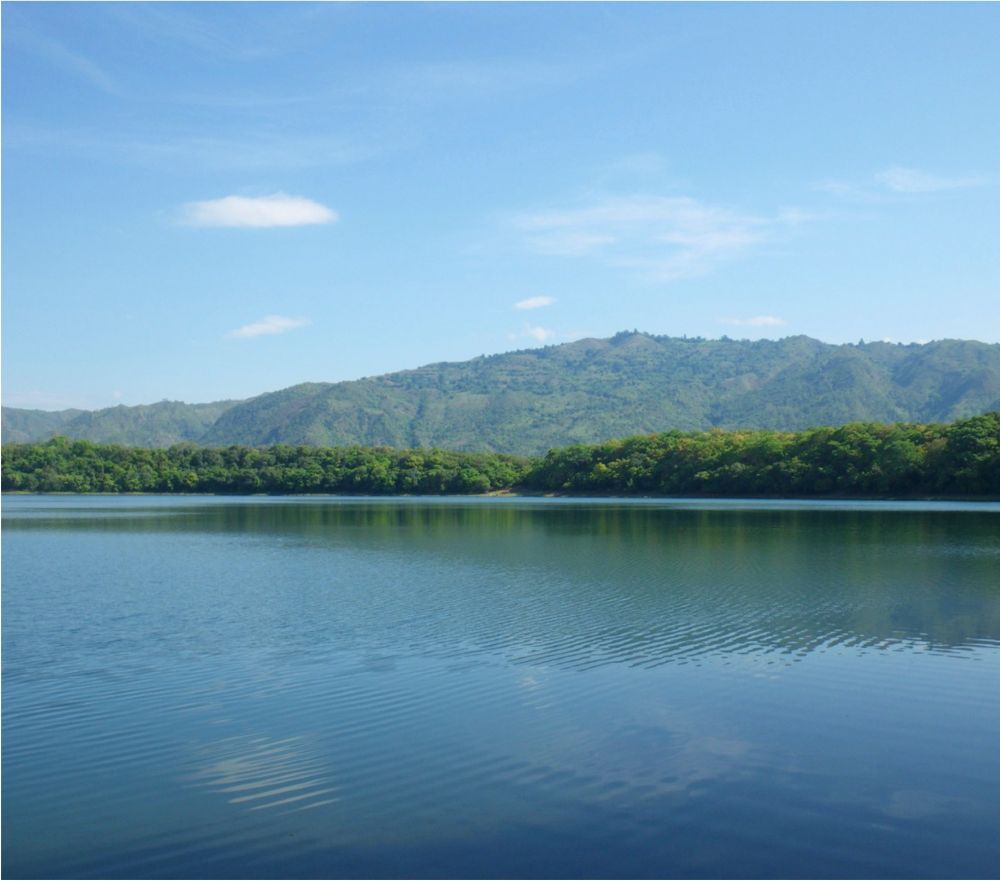
Lake Masoko in Southern Tanzania, also known as Lake Kisiba, is only ~40m deep and 600m in diameter. It was formed around 50,000 years ago, and is isolated from all nearby rivers and lakes. Genetic data suggest it was colonised by Astatotilapia calliptera around 10,000 years ago.

In Lake Masoko, Astatotilapia calliptera has two ecotypes. The shallow living "littoral" ecotype has yellowish males, while the deep living "benthic" ecotype has blueish males. Recently published research led by Madeleine Carruthers and colleagues shows how these fish occupy different light regimes, and have correspondingly different visual sensitivities. Males of these ecotypes have brightly coloured eggspots, used to signal their prowess. The colours of those spots have shifted to maximise their visibility to other fish of the same ecotype. Genetic data suggest these ecotypes are largely reproductively isolated, and started to separate only 1000 years ago. Photos are kindly provided by Ad Konings.
In crater Lake Masoko one fish species is splitting into shallow and deep-living ecotypes occupying different light environments. New research shows their visual systems are diverging, and how colours of male eggspots have changed to maximise their visibility. doi.org/10.1093/molb...
28.08.2025 19:51 — 👍 57 🔁 12 💬 3 📌 1
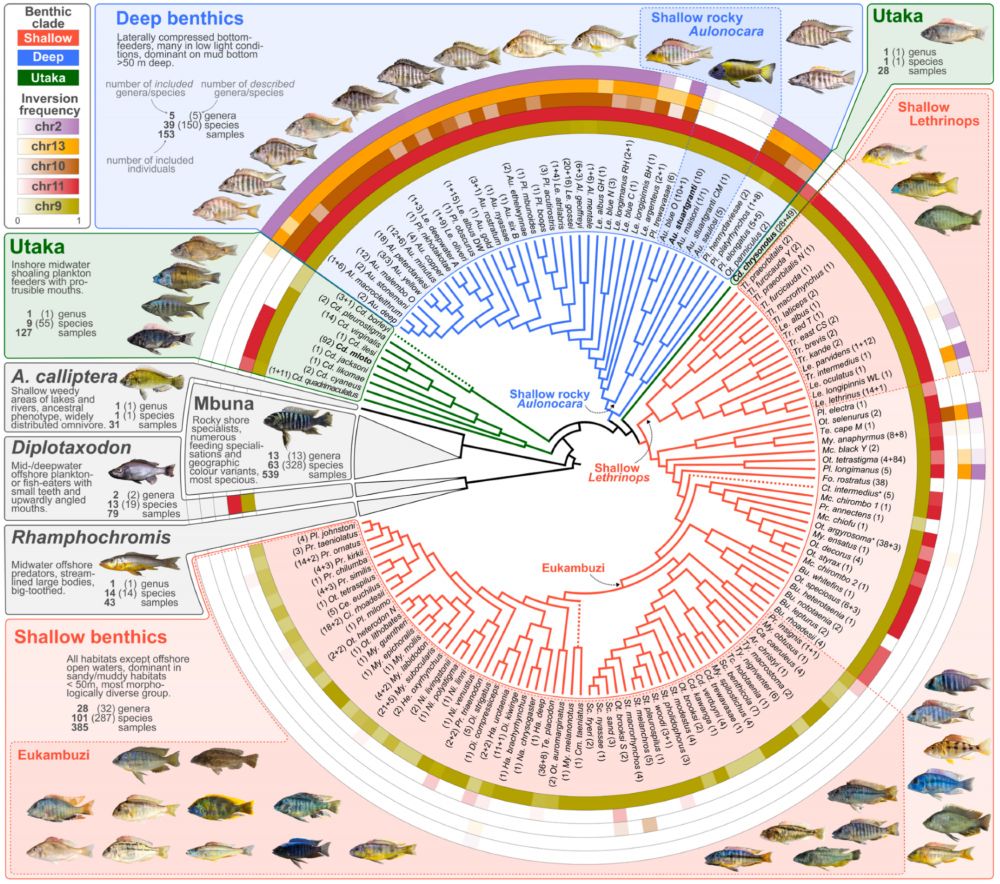
A circular phylogeny of Malawi cichlids with inversion frequencies indicated for different taxa as rings around the tree.
Check out our new paper about chromosomal inversions in Malawi cichlids! 🐟🧬
Available here without a paywall: hdl.handle.net/10067/214834... (click on the ‘Full text (open access)’ link).
19.06.2025 12:23 — 👍 17 🔁 10 💬 2 📌 1
need one of this cushions!!!
22.05.2025 16:24 — 👍 1 🔁 0 💬 0 📌 0
Solidarity with trans women after today’s Supreme Court ruling.
The rollback of LGBT rights — especially trans rights — is global, bankrolled by billionaires and the far-right.
Trans rights are human rights. We must defend the Equality Act and its protections for trans people.
16.04.2025 13:01 — 👍 3009 🔁 844 💬 93 📌 33
This is how Israeli settlers and soldiers – supported by the entire Republican party & much of the Democratic party – is responding to a movie about peace:
24.03.2025 19:05 — 👍 629 🔁 271 💬 7 📌 7
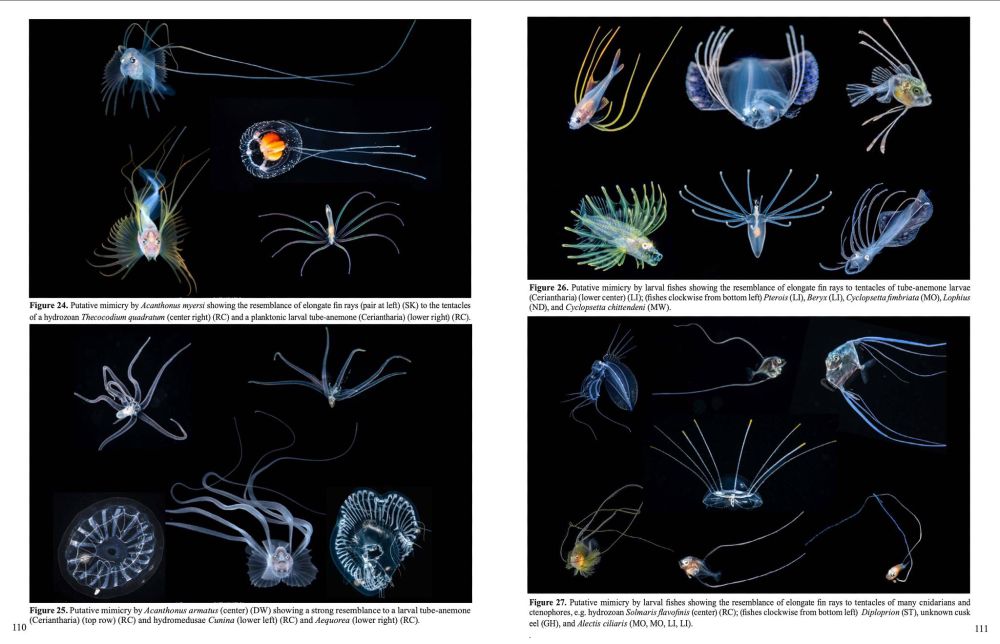
Four composite images showing larval marine fishes that appear to be mimicking noxious or unpalatable invertebrates.
A fascinating paper investigating circumstantial evidence that suggests that one of the ways that some pelagic marine fish larvae avoid predation is by Batesian mimicry of noxious, unpalatable, and/or low- caloric-value invertebrates primarily cnidarians & ctenophores.🐟🧪
zenodo.org/records/1488...
24.02.2025 14:22 — 👍 57 🔁 17 💬 3 📌 0
Professor of Invasion Biology at UCL. Amateur father, birder, moth-er. Mainly post wildlife photos, occasionally science and politics. Author of The Jewel Box, winner of the ZSL Clarivate Award for Communicating Zoology.
Research Fellow at University of Helsinki
~ Evolution, genomics, lepidoptera, all things colour🦋
“An artist revealing the infinitesimal.” NYC based creative.
https://stevengawoskiart.com/
Ecology and evolutionary biology, mainly fishes, climate change, conservation
Marine biology, ctenophores, bioluminescence, deep-sea, genomics, computing for biologists.
The Radiant Sea. Photo book.
Cello? Views my own.
bit.ly/arms-deep bit.ly/radsea
Eco-Evo-Devo PhD student focusing on the predation response in Daphnia @BiologyKULeuven 🧬 || I sometimes draw silly doodles
🍉
Evolution of developmental processes.
Associate Professor @OxfordBiology & Fellow @JesusOxford.
@SteventonLab, @CRGenomica & #embryo17 alumna.
Working mother.
Custom illustrations for biologists by Julie Johnson. • #sciart #scicomm • species paintings • scientific diagrams • figure design for ecologists and evolutionary biologists • www.lifesciencestudios.com
Evolutionary biologist @KU_Leuven. #Adaptation #Plasticity #Speciation #Genomics #Beetles #Butterflies #Daphnia.
https://bio.kuleuven.be/eeb/sv/
Research Fellow at Girton College, Cambridge
Interested in population genomics, invasive species, hybridization, adaptation, speciation
Visual Ecologist. Defensive colouration, Behavioural ecology, Evolution, Comparative phylogenetics.
Underwater Photonaturalist, Guide, & Critter Spotter sharing the weird & colorful life found in Florida’s urban waterways. Shallowseasgallery.com
Research group in the Biochemistry department @cambiochem.bsky.social at the University of Cambridge exploring the RNA Universe! 🧬✨ https://www.ericmiskalab.org/
Managed by lab members
Organisers of @cambridgerna.bsky.social
Assistant Professor at @CamZoology studying pigmentation and neural crest evolution in cichlids.
Our objective is to provide training in the fields of genomics, population genetics and phylogenomics.
Assistant Professor at UT Austin's Marine Science Institute | Fishes, functions, and marine ecosystems | he/his | Views are my own
www.fishandfunctions.com 🐡📉
SSE Grad Student Advisory Council - serving all levels of students & postdocs. Tweeting about meetings, awards, jobs, & other resources. RT does not = endorsement






